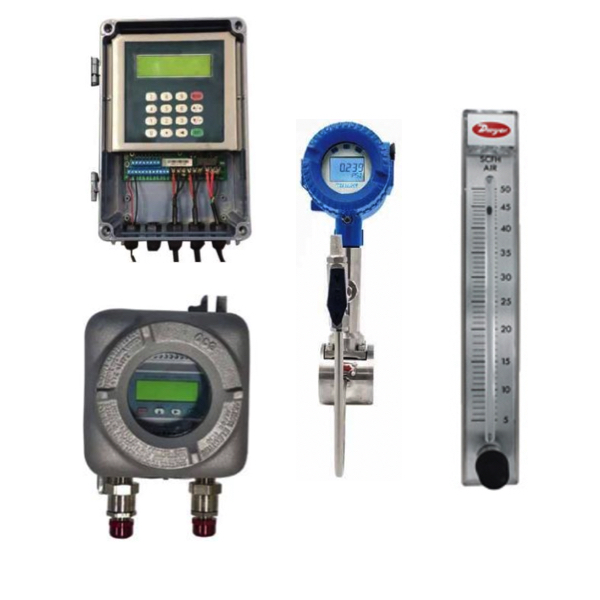Flow Meters & Transmitters

Flow meters and transmitters are essential instruments for measuring and monitoring the movement of liquids and gases in industrial systems. These devices provide critical data used for process control, system efficiency, safety monitoring, and regulatory compliance across industries such as water treatment, oil and gas, petrochemical processing, HVAC, and manufacturing.
RSP Supply offers a broad selection of flow meters and flow transmitters designed for air, water, and gas measurement. Available technologies include volumetric flow meters, differential pressure flow meters, Venturi-based designs, and electromagnetic flow meters. Flow meters measure the rate or volume of fluid passing through a system, while flow transmitters convert these measurements into standardized electrical signals for monitoring, automation, and control systems.
Built with integrated electronics and robust construction, flow meters and transmitters deliver reliable, repeatable measurements in demanding environments. Many systems support remote monitoring, making them well suited for installations in hard-to-access or hazardous locations. These instruments help maintain accurate flow control, improve operational efficiency, and support long-term system reliability.
FAQs
Q: What is the difference between a flow meter and a flow transmitter?
A flow meter measures the flow rate or volume of a liquid or gas, while a flow transmitter converts that measurement into a standardized signal, such as 4–20 mA or voltage, for use by control systems.
Q: What types of flow meters are commonly used for air, water, and gas?
Common types include volumetric flow meters, differential pressure flow meters, ultrasonic flow meters, electromagnetic (mag) flow meters, turbine flow meters, and positive displacement meters.
Q: How do differential pressure flow meters work?
Differential pressure flow meters create a pressure drop across a restriction such as an orifice plate, flow nozzle, or Venturi. The pressure difference between the upstream and downstream sides is used to calculate flow rate.
Q: What is a mag flow meter used for?
Magnetic flow meters measure the flow of conductive liquids by detecting voltage generated as fluid moves through an electromagnetic field. They are commonly used in water and wastewater applications.
Q: Can flow meters be used for remote monitoring applications?
Yes, when paired with a flow transmitter, flow meters can send measurement data to remote monitoring or control systems, making them ideal for hard-to-reach or hazardous locations.
Why Buy Flow Meters & Transmitters from RSP Supply
RSP Supply offers a dependable selection of flow meters and transmitters designed for accurate air, water, and gas measurement in industrial environments. Our products support a wide range of flow technologies and application requirements, helping customers maintain precise control, system efficiency, and reliable data acquisition. Customers rely on RSP Supply for industrial-grade instrumentation, technical expertise, and trusted measurement solutions.

